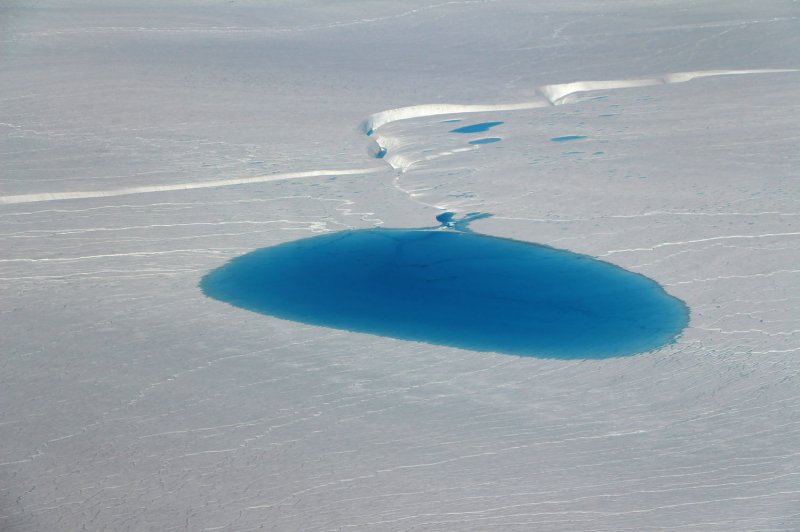How much of Greenland's ice sheet melts by the end of century is dependent on the effects of climate change on the region's cloud dynamics. NASA Photo by John Sonntag/UPI |
License Photo
June 24 (UPI) -- Predicting where, how and how quickly Greenland's ice will melt is difficult. Projections by the best models are cloudy, and new research suggests clouds are doing the clouding.
Currently, models of Greenland's melting ice sheet put the greatest emphasis on the impacts of greenhouse gas emissions. But new research, published this week in the journal Nature Climate Change, suggests the microphysics of clouds are equally important.
Under high emission scenarios, the uncertainties of Greenland ice sheet models are caused almost entirely by the uncertainties of cloud dynamics.
Cloud cover dictates the ice sheet's longwave radiation exposure. When clouds over Greenland are thicker, they operate like an insulating blanket, encouraging longwave radiation and surface-level melting.
Thinner clouds are associated with reduced melt rates, researchers determined.
The uncertainty caused by clouds translates to a difference of nearly five inches of global sea level rise by the end of the century.
The accelerated melting of Greenland's ice sheet could threaten many coastal communities across the globe. To better project this threat, authors of the new paper suggest scientists work to figure out how climate change will impact cloud dynamics in the Arctic.
"Observations of cloud properties in the Arctic are expensive and can be challenging," lead author Stefan Hofer, PhD student at the University of Bristol, said in a news release. "There are only a handful of long-term observations of cloud properties in the Arctic which makes it very challenging to constrain cloud properties in our climate models."
"The logical next step would be to increase the amount of long-term observations of cloud properties in the Arctic, which then can be used to improve our climate models and predictions of future sea level rise," Hofer said.















